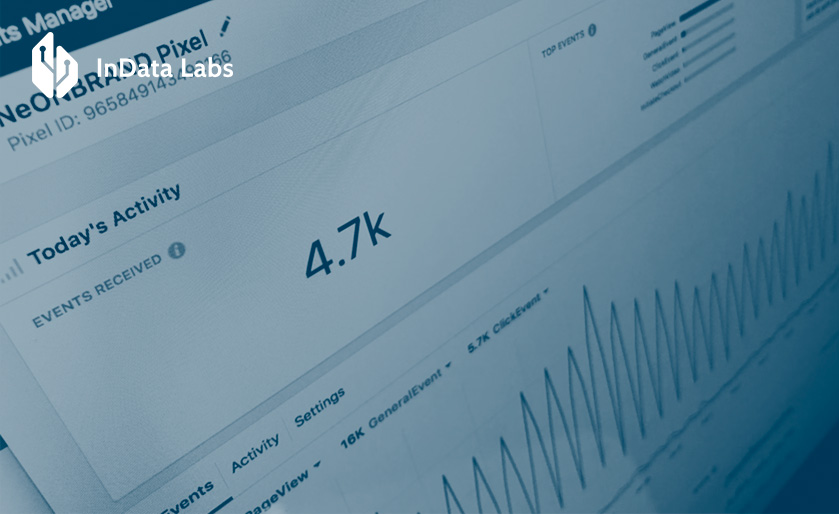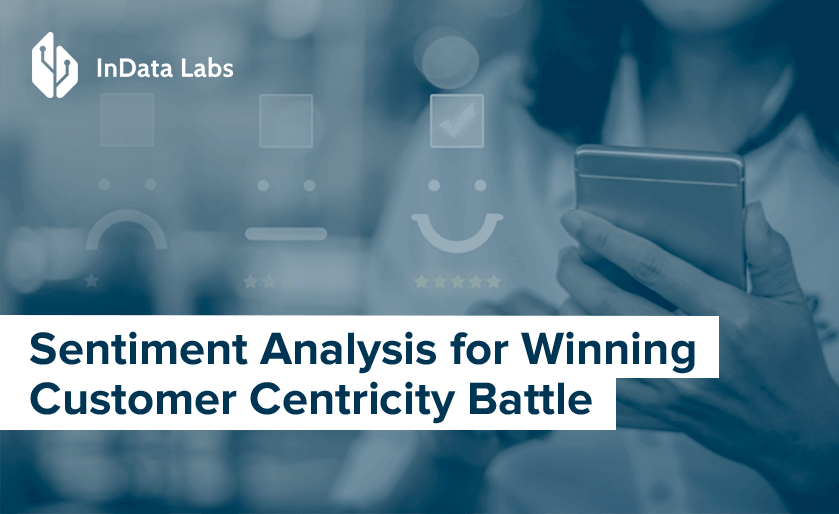Today’s company leaders and marketing professionals face the challenging task of uncovering how customers truly feel about products, services, and brands. Doing that becomes less daunting due to customer review sentiment analysis. Here’s a closer look at how companies can use it and what outcomes they might get.
What is customer sentiment analysis?
Sentiment analysis, also known as opinion mining, uses natural language processing (NLP) to determine whether people’s feelings are negative, positive, or neutral. Many people consider NLP a subset of artificial intelligence (AI) that concerns speech and the use of language. NLP reviews tools that analyze feedback can illuminate valuable patterns.
Proceeding with sentiment analysis of customer reviews means creating a database of feedback and using algorithms to better understand it.
Potential ways to evaluate customer feedback
Company leaders have various options concerning how they’ll conduct sentiment analysis reviews. However, the specific approaches vary based on what they want to determine and how specifically they want to drill down into the data. The most basic options center on the polarity of a text, meaning identifying if it’s a positive, negative, or neutral sentiment.
However, a more advanced customer sentiment analysis solution can detect particular emotions, such as anger, sadness, or disappointment. Others can also uncover details about client intentions, including their interest or lack thereof. These variations illustrate why decision-makers should specify what they want to know before creating a customer review dataset for sentiment analysis.

Source: Unsplash
A company representative may want to do a graded sentiment analysis if their business is highly dependent on star ratings. In such cases, the results can show how strongly a person feels about their experience. This option is also called fine-grained sentiment analysis. This kind of sentiment analysis of customer reviews is particularly useful if a company’s products appear on Amazon or a similar site that requires people to give star ratings when providing feedback.
Aspect-based sentiment analysis is another possibility. It’s advantageous because it links people’s feelings to specific components or characteristics of a product. If someone’s review says, “This smartphone’s battery life is too short,” the algorithm would understand that a person is specifically unhappy about the battery performance. Focusing on aspects is a technique that allows the feature extraction sentiment analysis of customer product reviews. It helps identify which features get commented on the most when people give feedback.

Source: Unsplash
Emotion-based is another category often considered by people who do sentiment analysis on customer reviews. These evaluations determine the feelings driving feedback about a product or service. However, it can be challenging, particularly due to slang terms. In Ireland, people use “deadly” to express something fantastic. More broadly and in certain subcultures, the word “sick” often describes impressive things.
What are the main steps of sentiment analysis?
The process of sentiment analysis using product review data or similar content breaks down into several specific steps. The first one involves gathering information, often by using scraping tools to accelerate this phase. This enables the creation of a customer review dataset for sentiment analysis.
From there, it’s time to clean the data and prepare it for further use. People might begin by removing stopwords, such as “and,” “but” and “a.” They’ll also need to remove any punctuation. These steps take time, but they make sentiment analysis using product review data more impactful overall by ensuring language analysis software can read the content correctly.
After that, the data preparation often involves stemming, a technique used to pull out the base forms of words. If “eat” is the base form, related terms include “eaten,” “eats” and “eater.” Using stemming in sentiment text analysis reduces the number of required computations. Together, these steps remove aspects of the text that are likely irrelevant or unnecessary.
It’s then time to let the algorithms work on the data and obtain sentiment scores. This generally involves providing a sentiment library for algorithms to identify and classify emotions within the data.

Source: Unsplash
TextBlob and VADER are two examples of sentiment analyzers. NLP reviews are helpful resources for showing how they work. In one case, someone compared the two by using a 500-tweet subset of 1.6 million social media posts on Twitter. As that example shows, one significant advantage of performing sentiment analysis of customer product reviews using machine learning is working with vast quantities of data quickly.
VADER was approximately 61% accurate when used with preassigned categories, and TextBlob achieved a rate of 44%. Fortunately, the tester improved the accuracy of both by tweaking the libraries’ functionality. Doing that resulted in accuracy rates of 72% and 65%, respectively.
When people do sentiment analysis of customer reviews, Python opens additional options. Tutorials exist that teach people how to use that programming language to create data analyzers. One such resource applies this process to movie reviews. However, that approach can be significantly time-consuming, especially for people without programming experience. In such cases, company leaders often get better results by working with companies that offer NLP services.
What information might go into a customer review dataset for sentiment analysis?
Company leaders that decide they want to learn more about how customers feel about their products may struggle to find information sources to feed into sentiment analysis tools. However, after thinking about it for a short while, they should realize there are more potential places to find information than expected. Some of those sources of reviews data could include:

The goal is to find places where people go to naturally express their opinions about certain products. Social media posts are particularly beneficial when business representatives want to track how people’s feelings shift over time.
Perhaps a company ran a Super Bowl advertisement or debuted a new product on a particular day. Some consumer feedback emotion analyzers can monitor real-time changes. Then, it’s easier for marketers to use the customer review dataset for sentiment analysis to narrow down which factors probably caused relatively rapid changes in people’s feelings or whether certain campaigns had the desired effects.
Benefits of product review sentiment analysis
Performing sentiment analysis using product review data takes resources and dedication, but the results often pay off. One of the primary reasons to evaluate content this way is that it allows marketers to identify changes in people’s feelings sooner than they otherwise might. Staying on top of those shifts is critical for the reputation of brands and products, especially considering how fast opinions can spread on social media.
Some sentiment analysis tools for customer reviews make it easier to identify trends in the data more efficiently. They might show that people misunderstand or fail to utilize a certain product feature. In such cases, people at the company in question might decide to release a how-to YouTube video or similar resources to assist consumers. One study found that sentiment analysis using product review data revealed the minimum star rating a business should have before people choose it. In most cases, people wanted no fewer than four stars.

Source: Unsplash
Customer reviews sentiment analysis can also span beyond people’s feedback on sites like Trustpilot, Yelp, and Google. A growing number of companies use sentiment analyzers on the software used by customer service representatives. Some of those solutions offer real-time detection of when people start to get upset, then give on-screen tips to customer service agents to help calm them down.
In those cases, customers often informally review products as they describe problems to support agents. They might say things like, “I’m very dissatisfied with this dress and I want to return it. It shrunk two sizes in the wash, even though I followed the instructions on the tag.” Those experiences could become part of NLP reviews data that ultimately help company representatives understand how people feel and where room for improvement exists.

Sentiment analysis using machine learning
These innovative ways of looking at reviews differently would not be possible without AI and machine learning. The applications of those technologies expand to other parts of the business, too. In one case, a health care company found a $13 million discrepancy with a particular vendor. That result was possible even when the people training the algorithms did not know precisely what to have them detect.
The Naive Bayes algorithm is a fairly straightforward option often used in sentiment analysis. Customer reviews feature numerous words, but this algorithm assigns a probability that a certain one is positive or negative. Then, Support Vector Machines algorithms identify and classify text according to sentiment polarity.
Deep learning algorithms are also under the machine-learning umbrella. They work based on how human brains interpret information. These are only a few of the many machine learning solutions that could apply to analyzing how people feel about their experiences with companies. Exciting progress has already happened concerning the sentiment analysis of customer product reviews using machine learning, and more are undoubtedly on the horizon. Here are some things researchers have achieved recently.

Source: Unsplash
The accurate sentiment analysis of customer reviews requires understanding when people are genuinely upset and when they may only be trying to get reactions from others. In one instance, Binghamton University researchers developed machine learning algorithms that achieved 90% accuracy in identifying bullies and other aggressors on Twitter.
Additionally, a company’s sentiment analysis reviews are more trustworthy if decision-makers feel confident they understand the feedback in context. Consider when someone says, “I waited for 30 minutes to get seated, even though I already had a table reservation. Great!” If a person reads that review, they can assume that the situation is not actually great and that the reviewer was being sarcastic.
Researchers from the University of Central Florida developed a deep learning algorithm that works as a sarcasm detector. They believe it could be instrumental in helping company representatives accurately and quickly carry out a sentiment analysis on customer reviews.
This work represents some of what’s possible when performing sentiment analysis of customer product reviews using machine learning. Company representatives who want to know more about how the technology could help them should consider meeting with people at a machine learning consulting firm to learn about the options available that would best meet the needs of their business.
Sentiment analysis unlocks customer insights
Many people are eager to give public-facing feedback about their good and bad experiences with companies. Business representatives can turn that reality into an advantage by using technology in the ways explored here. That provides them with a richer understanding of how customers feel and how to improve their future experiences.
Author bio
April Miller is a senior writer with more than 3 years of experience writing on AI and ML topics.
Make your reputation your most valuable tool with sentiment analysis
Schedule an intro call with our consultants to explore your business and find out how we can help.



